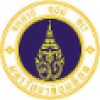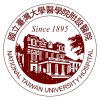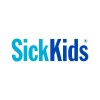
Improving Access to Pivotal Response Treatment (PRT) Via Telehealth Parent Training
Autism Spectrum DisorderThere is an urgent need for improved access to effective autism treatments. With advances in technology, distance learning models have particular promise for families who cannot access evidence-based parent training locally or may be on long wait-lists for behavioral treatments. Pivotal Response Treatment (PRT) is an established treatment for autism spectrum disorder (ASD); however, a telehealth PRT model has not yet been evaluated in a controlled trial. This study will examine the effects of training parents in PRT via secure video conferencing and investigate 1) whether parents can learn via telehealth to deliver PRT in the home setting (PRT-T) and 2) whether their children will show greater improvement in functional communication skills compared to children in a waitlist control group. Participants will include 40 children age 2 to 5 years with ASD and significant language delay. Eligible children will be randomly assigned to either PRT-T (N=20) or waiting list (N=20). Weekly 60-minute parent training sessions will be delivered for 12 weeks via secure video conferencing software by a PRT-trained study therapist. The effects of PRT-T on parent fidelity of PRT implementation, child communication deficits including frequency of functional verbal utterances, and parent-report of communication skills on standardized questionnaires will be evaluated. This research will provide a foundation for wider dissemination of technology-based solutions to improve access to ASD treatment.

Treatment of Social and Language Deficits With Leucovorin for Young Children With Autism
Autism Spectrum DisorderLanguage DisordersThe primary objective of this study is to evaluate the cognitive and behavioral effects of liquid leucovorin calcium on young children with autism spectrum disorder (ASD) and determine whether it improves social communication as well as the core and associated symptoms of ASD. The investigators will enroll 80 children across two sites, between the ages of 2.5 and 5 years, with confirmed ASD and known social and communication delays. Participation will last approximately 26 weeks, from screening visit to end of treatment.

Therapeutic Use of rTMS in Pediatric ASD and ADHD Cohorts
Autism Spectrum DisorderADHD1 moreIn this interventional, pilot clinical trial investigators will stimulate the dorsolateral prefrontal cortex (DLPFC) in patients with Autism and ADHD. The goal of the study is to improve Cognition and Executive Functions associated with this brain region and, consequently, ameliorate the core symptoms of the disorders. Specifically, the primary purpose is to establish the efficacy, safety, and tolerability of TMS in pediatric patients with ASD and ADHD. Concurrently, the research aims to uncover the impact of TMS on particular biomarkers associated with the development of these disorders and validate the hypothesis suggesting that the BDNF gene polymorphism (Val66Met) could influence an individual's susceptibility to TMS. Participants will be randomized into the active group and placebo group, to guarantee a real assessment of the impact of neurostimulation on the cognitive, behavioral, and biochemical parameters. Participants will be asked to complete a neuropsychological evaluation and a biological sample collection before and after TMS treatment, and 1-month post-treatment completion.

Multisensory Environment Room in Children With Autism Spectrum Disorder
Autism Spectrum DisorderAutismTo investigate the effect of multisensory environment room on behavior in children with autism spectrum disorder age 3-5 years old. The children will be randomized into 2 groups: the experimental and the control group. The control group will be educated about the autistic and hoe program training. The intervention group will got the same educational program as the control group plus training in multisensory room environment once a week for 10 weeks. The outcome measurement was done as the before intervention, at the 5th and 10th week.

Effect of Virtual Reality-based Training on Balance and Walking in Youth With Autism Spectrum Disorder...
Autism Spectrum DisorderThe goal of this clinical trial is to assess the effect of short-term (3 days/week for 2 weeks) Virtual Reality (VR) active video gaming intervention on static and dynamic balance, versus traditional balance training exercises, in youth with ASD. The participants in the intervention group will engage in VR active video gaming using the Nintendo Switch Sports under supervision via Zoom for 6 sessions occurring over 2 weeks, from their home. While, the participants in the control group will engage in standard physical therapy exercises for balance and walking under supervision via Zoom, for 6 sessions occurring over 2 weeks, from their home. Their balance and walking will be assessed 3 times, 3-5 days before the intervention, 3-5 days after the intervention and 4-weeks after the intervention. Participants static balance will be assessed by standing on pressure mat, under 2 conditions, eyes open and eyes closed for 30 seconds each. The Pediatric Berg's balance Scale (PBS), a 14-point scale containing everyday activities, will be used as a clinical measure for assessing the static and dynamic balance. 13-infra-red camera motion capture system, Qualisys, will be used for assessing the walking. The difference in the balance and walking parameters will be assessed and compared.

Establish the Couple Intervention Program for Adults With Autism Spectrum Disorder
Autism Spectrum DisorderThe development of adult intimate relationships and the transition into couplehood are part of most people's life cycles, but these transitions become very challenging for individuals diagnosed with autism spectrum disorder (ASD) in as much as social interactions, emotional communication, and reciprocity, which are essential for interpersonal relationships, are made more difficult due to the condition itself. In the Adult ASD Clinic of National Taiwan University Hospital, we observe that the wives of the ASD husband suffer from long-term frustration, loneliness and helplessness, and are frequently experience anxiety and depression, that in turns changes the family's function and impacts on children's mental health. To date, there are limited intervention models focusing on couple therapy for ASD adults (or neurodiverse couple). Given the strong needs of clinical service, this study aims to identify the common problems of the ASD couples and develop a program to improve their partner relationships.

Optimizing Outcomes for Young Autistic Children
AutismAutism Spectrum DisorderThe overarching goal of the proposed study is to: (a) determine how best to sequence two parent-mediated interventions: a social communication intervention (Project ImPACT, Improving Parents as Communication Teachers) and a disruptive behavior intervention (Parent Training for Disruptive Behavior) and (b) examine moderators and mediators of intervention outcomes.

Deep Brain Stimulation in Children With Autism
Autism Spectrum DisorderSelf-Injurious BehaviorThe purpose of this study is to evaluate the safety and possible effectiveness of deep brain stimulation (DBS) of the nucleus accumbens in children with autism spectrum disorder and treatment-refractory, repetitive self-injurious behavior. Six (6) patients will be recruited and enrolled in this pilot study and study duration for each patient will be one (1) year. All will undergo surgical implantation of the Medtronic DBS system and will receive stimulation of the nucleus accumbens (2 electrodes per patient).This will be an open, non-blinded, non-randomized, pilot, phase I trial.Expected study duration is 36 months.

Safety and Efficacy of the Transfusion of UCB in Patients With an ASD Depending on the Degree of...
Autism Spectrum DisorderAutismAutism is one of those disorders in Autism spectrum disorders (ASD), which characterized by social interaction abnormalities, impaired verbal and non-verbal communication, and repetitive, obsessive behavior, while the therapeutic effect of current treatments remains limited progress. The possible reason for ASD is neural hypoperfusion and immune dysregulation. The Human Umbilical Cord Blood Mononuclear Cells (hUCB-MNCs) have been shown to have the ability to modulate the immune response and enhance angiogenesis, suggesting the novel and promising therapeutic strategy. In this study, the safety and efficacy of hUCB-MNCs infusion will be evaluated in patients with Autism with regarding to HLA compatibility.

Community-based Adaptive Autism Intervention for Toddlers
Autism Spectrum DisorderThe proposed study (CAIT: Community-based Adaptive Autism Intervention for Toddlers) aims to determine the most optimal sequence of interventions for improving the social- communicative, language and cognitive outcomes of toddlers with autism spectrum disorder (ASD). The target population consists of 2-3 year-old children with ASD who receive community based, publicly funded early intervention in two authentic educational settings in East Harlem and the Bronx, NY known as New York Center for Infants & Toddlers (NYCIT). An expected 300 toddlers with ASD will participate with their community-recruited paraprofessional teaching assistants (TAs) and group leaders (GLs). The study aims to construct the most effective one-year, two-phase, adaptive intervention, in which intervention is individualized based on a child's initial response to intervention. Phase 1, from program entry to either 6 or 12 weeks (randomized), involves 60 minutes daily of an evidence based social communication intervention, JASPER (Joint Attention, Symbolic Play, Engagement & Regulation) delivered 1-on-1 to the child by the trained TA. At end of Phase 1, response to intervention is rated by the GLs for slow or fast improvements of joint engagement (a core deficit in the early development of children with ASD, and a significant indicator of good progress toward improving social communication and language). In Phase 2 (to week 24), toddlers responding slowly are re-randomized to continue with JASPER for 60 minutes per day or augment treatment with direct, structured teaching of social communication targets for 30 minutes and JASPER for another 30 minutes per day. Toddlers responding quickly are given 30 minutes of JASPER and 30 minutes of jasPEER (JASPER with a peer) to further improve socialization and social communication.
